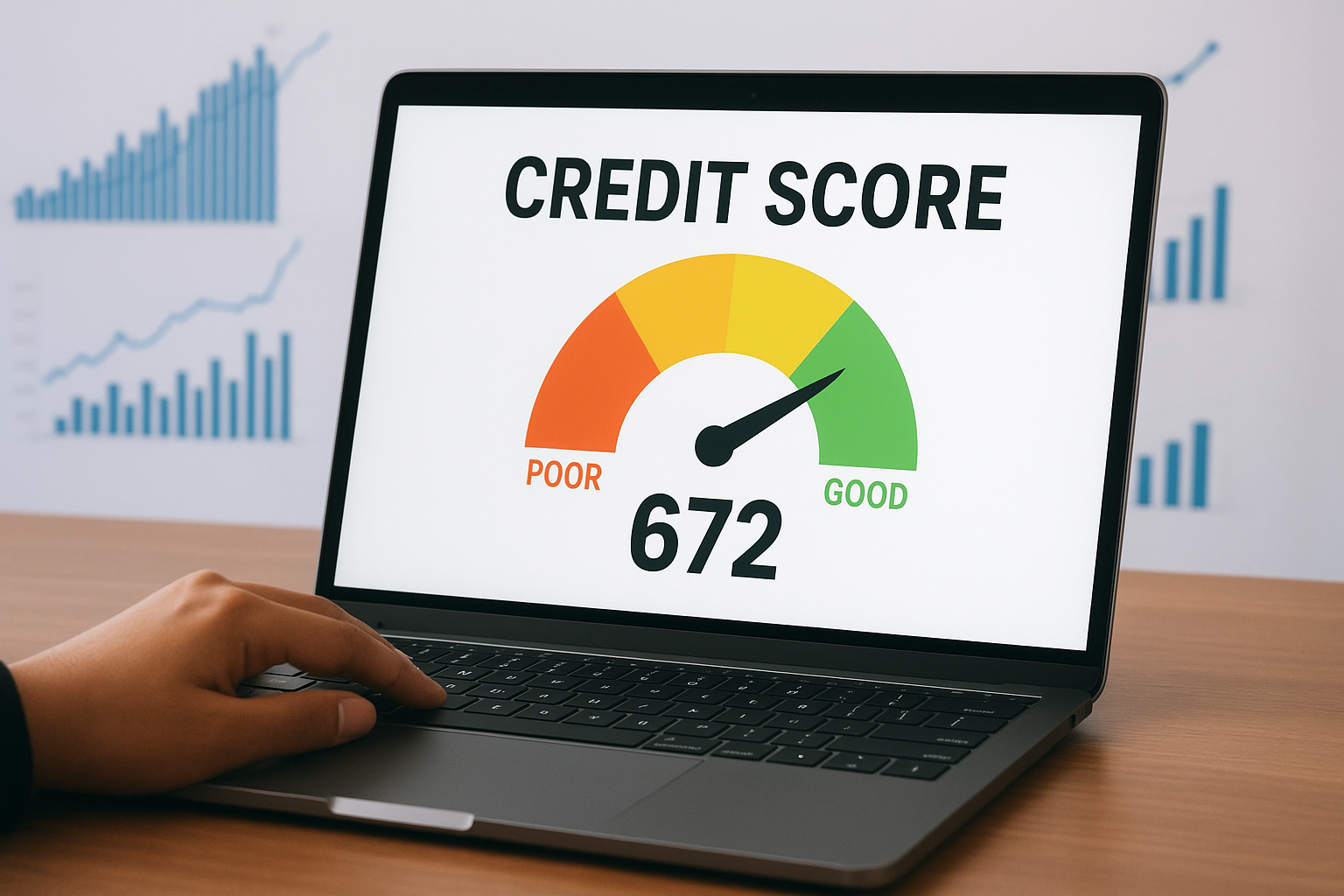Increase credit score by 100 points is the goal of many individuals seeking financial stability. Whether you’re aiming to secure better loan terms, qualify for a mortgage, or simply build a strong financial foundation, focusing on improving your credit score is essential. Fortunately, you can make significant progress in as little as six months with the right strategies. In this comprehensive guide, we will explore actionable steps, helpful resources, and expert-backed techniques to help you increase your credit score by 100 points.
Table of Contents
-
Understanding the Basics of Credit Scores
-
Why Increasing Your Credit Score by 100 Points Matters
-
Step 1: Check Your Credit Reports for Errors
-
Step 2: Pay Down Credit Card Balances Aggressively
-
Step 3: Make Timely Payments a Priority
-
Step 4: Increase Credit Limits Strategically
-
Step 5: Use Credit-Building Tools Wisely
-
Step 6: Become an Authorized User on a Trusted Account
-
Step 7: Diversify Your Credit Mix
-
Step 8: Limit Hard Inquiries
-
Step 9: Keep Old Accounts Open
-
Step 10: Monitor Your Progress and Stay Consistent
-
Conclusion
-
Frequently Asked Questions
Understanding the Basics of Credit Scores
What Is a Credit Score?
Your credit score is a three-digit number that reflects your creditworthiness. The most widely used scoring model, FICO, ranges from 300 to 850. Lenders use this score to assess your ability to manage credit responsibly.
Key Components of a Credit Score:
-
Payment History (35%)
-
Credit Utilization (30%)
-
Length of Credit History (15%)
-
New Credit (10%)
-
Credit Mix (10%)
Why Increasing Your Credit Score by 100 Points Matters
When you increase credit score by 100 points, you open doors to:
-
Lower interest rates
-
Higher credit limits
-
Easier loan approvals
-
Better insurance rates
-
Improved job prospects in certain industries
A higher credit score translates to more financial flexibility and significant long-term savings.
Step 1: Check Your Credit Reports for Errors
Start your journey to increase credit score by 100 points by reviewing your credit reports from the three major bureaus: Experian, Equifax, and TransUnion.
How to Get Free Credit Reports:
Visit AnnualCreditReport.com to access your free reports.
Common Errors to Look For:
-
Incorrect personal information
-
Duplicate accounts
-
Unrecognized hard inquiries
-
Incorrect payment status
If you find errors, dispute them immediately to potentially boost your score quickly.
Internal Link:
Check out our step-by-step guide on how to dispute credit report errors efficiently.
Step 2: Pay Down Credit Card Balances Aggressively
Your credit utilization ratio plays a huge role in your credit score. Keeping it under 30% is recommended, but reducing it to below 10% can help you increase credit score by 100 points faster.
How to Lower Utilization:
-
Make multiple payments per month
-
Focus on cards with the highest utilization first
-
Temporarily stop using credit cards until balances are lower
DoFollow External Link:
Learn more about credit utilization from FICO’s official resource.
Step 3: Make Timely Payments a Priority
35% of your credit score is based on your payment history. Missing even a single payment can significantly harm your efforts to increase credit score by 100 points.
Tips for Consistent Payments:
-
Set up automatic payments
-
Use calendar reminders
-
Prioritize at least the minimum payment
Late payments typically stay on your report for seven years, but their impact lessens over time if you establish a positive payment history moving forward.
Step 4: Increase Credit Limits Strategically
Requesting a credit limit increase can immediately lower your credit utilization ratio, helping you increase credit score by 100 points without paying down large balances at once.
Best Practices:
-
Only request increases on accounts in good standing
-
Avoid requesting limits on recently opened or delinquent accounts
-
Space out your requests to minimize risk of denials
Step 5: Use Credit-Building Tools Wisely
Credit-building tools can fast-track your journey to increase credit score by 100 points when used correctly.
Useful Tools Include:
-
Secured credit cards: Great for building credit from scratch
-
Credit-builder loans: Ideal for demonstrating consistent payments
-
Experian Boost: Adds utility and telecom payments to your credit file
Internal Link:
Explore our detailed review of the best credit-builder loans available today.
Step 6: Become an Authorized User on a Trusted Account
Becoming an authorized user on someone else’s well-managed credit card can help you increase credit score by 100 points by adding their positive payment history to your report.
Guidelines for Success:
-
Choose someone with low utilization and a strong payment history
-
Confirm that the card issuer reports authorized users to credit bureaus
-
Monitor the account to ensure responsible use
Step 7: Diversify Your Credit Mix
A diverse credit portfolio can improve your score and support your goal to increase credit score by 100 points.
Credit Types to Consider:
-
Credit cards
-
Auto loans
-
Student loans
-
Mortgages
-
Retail accounts
While you shouldn’t open new accounts solely for diversification, having a healthy mix over time helps build credit strength.
Step 8: Limit Hard Inquiries
Too many hard inquiries within a short period can temporarily lower your score, slowing your efforts to increase credit score by 100 points.
Smart Credit Application Tips:
-
Only apply for credit when necessary
-
Group rate-shopping inquiries (like for auto loans) within a 14-45 day window
-
Monitor your credit report for unauthorized hard inquiries
DoFollow External Link:
The Consumer Financial Protection Bureau (CFPB) offers more insights on managing credit inquiries.
Step 9: Keep Old Accounts Open
The length of credit history is essential when trying to increase credit score by 100 points. Closing old accounts can shorten your average account age and harm your score.
Best Practices:
-
Keep zero-balance cards open
-
Use old accounts occasionally to keep them active
-
Avoid closing cards just to simplify your wallet
Step 10: Monitor Your Progress and Stay Consistent
Improving your credit score is a gradual process that requires persistence. To increase credit score by 100 points in six months, consistency is key.
Effective Monitoring Strategies:
-
Sign up for credit monitoring services
-
Set monthly credit check-ins
-
Track score changes and report updates
Internal Link:
Learn how to track your credit improvement journey effectively.
Conclusion
When you focus on practical, proven strategies, it is absolutely possible to increase credit score by 100 points in just six months. From paying down balances and disputing errors to using credit-building tools and diversifying your credit mix, each step plays a crucial role in your success.
The most important ingredients are patience and consistency. By following this guide, monitoring your progress, and using both internal and external resources, you can build a stronger financial future and enjoy the benefits of a higher credit score.
Frequently Asked Questions
Can I increase my credit score by 100 points in less than six months?
Yes, in some cases, if errors are removed or credit utilization drops significantly, quick gains are possible. However, most people will see gradual improvement over several months.
What is the fastest way to increase credit score by 100 points?
Paying down high credit card balances and correcting credit report errors are usually the fastest strategies.
Will applying for new credit cards hurt my score?
A single application may cause a small temporary dip, but excessive applications can delay your efforts to increase credit score by 100 points.
Should I close unused credit cards?
Generally, no. Keeping them open can help maintain your credit utilization ratio and the length of your credit history.





We’re a group of volunteers and opening a new scheme in our community. Your website provided us with valuable info to work on. You have done an impressive job and our whole community will be thankful to you.